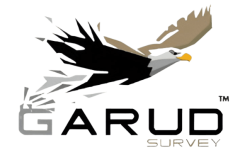Aerial Intelligence For Forest & Wildlife
Forest & Wildlife Survey
Drones transform Garud Survey operations for forest management and wildlife conservation. We provide a cost-efficient and secure alternative for tasks like wildlife observation and habitat delineation, outshining conventional methods in efficiency and accuracy.
Garud Survey plays a pivotal role in overseeing various aspects of forest management and wildlife conservation. Drones designed for these applications contribute to evaluating forest vitality, detecting deforestation, monitoring wildfires, and preserving biodiversity. We offer valuable insights into wildlife observation, habitat delineation, and tracking unlawful activities, ensuring a brighter future for our ecosystems.
Drone technology rapidly evolves for Garud Survey operations in natural landscapes, providing vital support for project blueprinting, comprehensive surveys, precise boundary establishment, and forest asset value assessment. Equipped with advanced features and high-resolution cameras, drones seamlessly operate, capturing accurate imagery with geographically-specific metadata.
Drones revolutionize Garud Survey in forest assessment and wildlife conservation, offering a novel perspective for priceless insights. They secure a brighter trajectory for the well-being of our forests and wildlife.
Highlights
- Geo-spatial Database for National Park/Sanctuaries/Biosphere Reserve
- Monitoring of Area Coverage & Survival percentage of Plantation or Afforestation
- Forest Type Thematic Mapping
- Inventory of Forest/Tree Resources
- Poaching activities Monitoring over periodic basis
- Real Time Monitoring of active fires
- Health Tracking of Forest
- Human Wildlife Conflict Management
- Round the Clock monitoring of threatened species
- Land Use Land Cover Maps
- Assessment of mining leases in forest areas
Use of Drone in Forest & Wildlife
Drones have emerged as indispensable tools in forest and wildlife survey. Their aerial prowess aids in monitoring ecosystems, tracking wildlife movement, preventing illegal activities, and surveying vast areas efficiently. Drones provide real-time data on deforestation, habitat changes, and biodiversity, aiding conservation efforts. These technological marvels enhance our understanding of intricate ecosystems, facilitating informed decision-making for the preservation and sustainable management of precious forest and wildlife resources.
- Wildlife Monitoring and Surveys
- Anti-Poaching and Law Enforcement
- Habitat Mapping and Analysis
- Fire Detection and Management
- Ecosystem Health Monitoring
- Seed Planting and Reforestation
- Research and Data Collection
- Aerial Surveillance
- Education and Outreach
- Human-Wildlife Conflict Mitigation
FAQs?
Drones equipped with various sensors (such as RGB cameras, multispectral sensors, LiDAR, thermal cameras) can gather data on vegetation health, canopy cover, species distribution, animal counts, habitat mapping, and illegal activities like poaching or logging.
Drones cover larger areas more quickly, provide high-resolution imagery, and access remote or challenging terrain. They reduce the need for human presence on the ground, minimizing disturbance to wildlife and lowering survey costs.
To begin, one needs to understand drone technology, obtain necessary permits, select appropriate drone surveyors, time for drone operation, and collaborate with experts in wildlife biology or conservation for effective data interpretation.
The accuracy depends on various factors such as drone type, sensor quality, flight altitude, and data analysis methods. When used correctly, drones can provide reliable estimates of wildlife populations, but ground validation is often necessary.
Drones are used to collect data on forest health, biodiversity, habitat mapping, and wildlife population monitoring. They offer aerial perspectives that aid in assessing the condition of forests, identifying species, and tracking changes over time.
